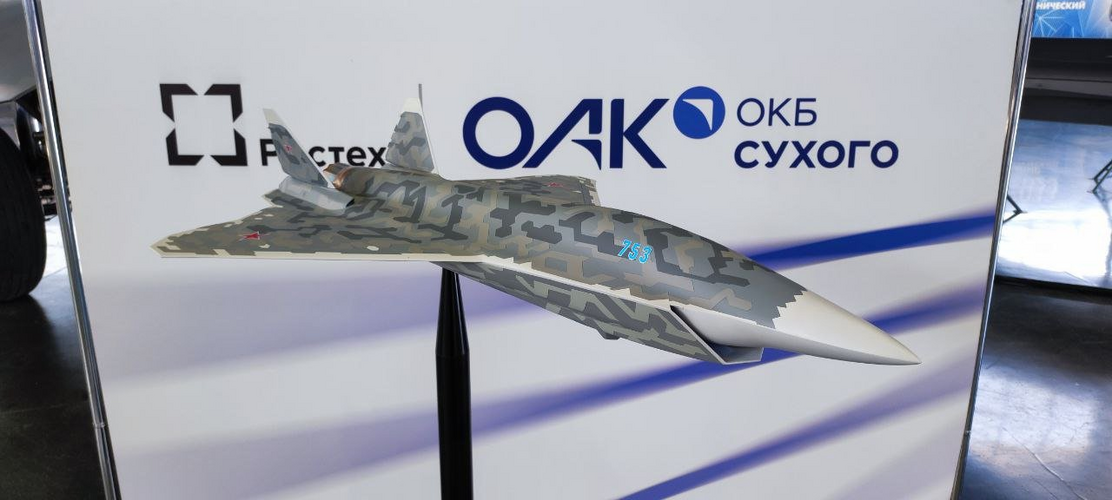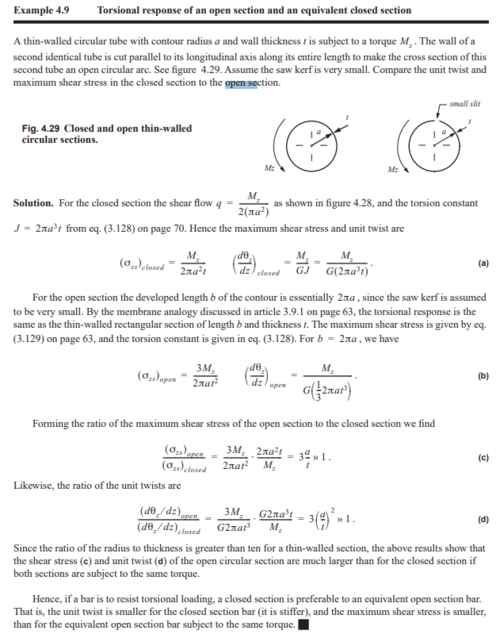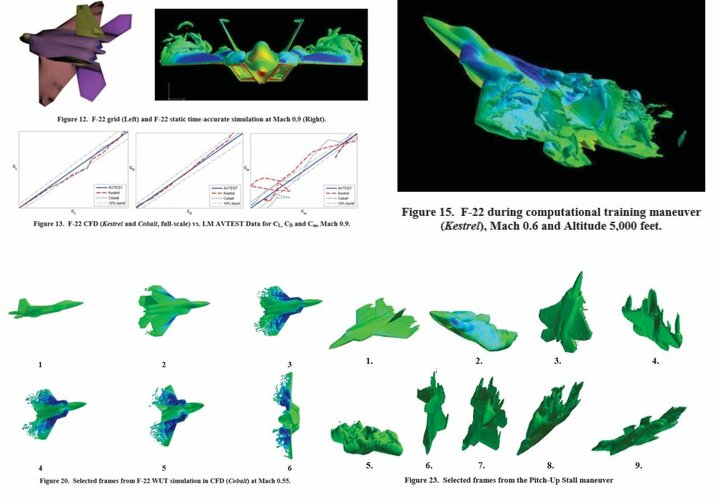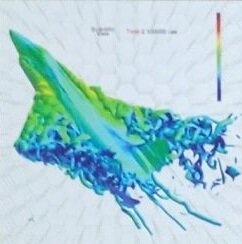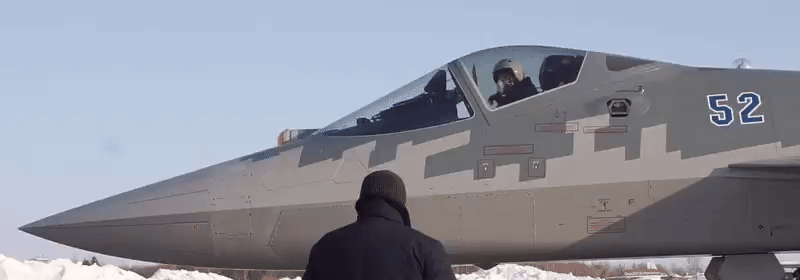Soviets actually overestimated the F-15 performance, the real EM numbers are worse, and I don't know the reasoning behind their estimates and certain limitations.
The ITR numbers for the F-15C are coming from the aeronautical engineers that have available data for such calculations, including the planes Clmax, which is 1,1 if I remember correctly (I know that the Su-27 Clmax is 1,85, which is considerably higher, and that is one of the main reasons for superior ITR and STR performance).
F-15C with the F100-PW-220 is also heavier so the slightly higher dynamic thrust numbers are negated by additional weight.
View attachment 753078
For example, Su-27 at 20 tones (with 4 missiles) can sustain 9G at 10000ft, but the clean F-15C with F100-PW-220 and 16,7 tones can't (it can sustain around 8,5G's).
Again, in this configuration F-15C has superior T/W ratio and lower wing loading, and still, it has worse performance which only highlights the aerodynamic efficiency of the Su-27 layout.
You have claimed without any data that the LERX-blended wing body layout is going to increase the overall drag of the plane in a turn.
I have given you the real-world example where we have same-generation, same-class fighters and how they compare with their respective aerodynamic layouts. You can't find better example than that!
F-22 is continuation and improvement of the F-15 configuration (no LERX, close coupled engines), and so is the Su-57 in relation to the Su-27 (LERX, blended wing body, engines placed apart).
F-22 doesn't have LERX, it has sharp inlet chins which generate vortices, but the effective lifting surface of the chin is miniscule in comparison to the real LERX.
F-15 sharp inlet edges also generate vortices, along with the wing root extension:
View attachment 753086
View attachment 753087
It is understandable that in the case of TVC malfunction nozzles are going into neutral position, that is a safety measure for all TVC nozzles, no matter the type of the nozzle. If the nozzle locks up in any position, other than neutral, there is hardly any measure that could save the plane.
Can you provide the data for the conditions where conventional F-22 aerodynamic controls (horizontal tails) can recover the plane from the post stall region?
I'm pretty sure that Sukhoi engineers know more than you about this subject, and about specific conditions they have in mind when they made the claim.
View attachment 753100
From this chart, we can see that even with the TVC, the F-22 has rudimentary roll/yaw control at 60 degrees AoA.
At that AoA, the plane cannot perform a full 360-degree roll (the Su-57 can, with roll rates that are significantly faster) because the aerodynamic control surfaces lack control authority, even with the help of the TVC that is controlling the pitch. Without TVC, the F-22 is positioned between the F-15 and F-16 in this regard.
There is an objective reason why the aerodynamic control surfaces placed in front of the center of gravity have better authority and controllability at high AoA. According to Sukhoi's chief test pilot, Юрий Ващук, only two Russian operational planes can achieve supermaneuverability without TVC: the Su-30SM and the Su-57. The Su-35S is more maneuverable and a much more capable dogfighter than the Su-30SM, but without TVC, it cannot exploit the post-stall region.
With addition of the canards Flanker series has unlocked the post stall region in totally controlled manner:
View: https://www.youtube.com/watch?v=AYKWMXAfKRA&t=1s
The plane in question is a former Su-37 that had a new, improved FCS installed; however, the engines with the TVC were removed and replaced with the standard AL-31F. That is the reason they have used the old Su-35 nomenclature. The same improved FCS is used for the Su-30MK/SM versions, and that plane can also perform all those maneuvers without TVC (other flanker versions can't).
We can see that even without TVC, the Su-35 can match the F-22 in the post-stall region, and in some instances, it even surpasses it. The Su-57 can also perform all those maneuvers without TVC, but with the TVC engaged, the plane has faster initial rotational rates and better controllability.
Actually, in that paper it was generalized about the types of control surfaces based on the relative position of the pitch control surfaces with respect to the aircraft's center of mass, and they were categorized in to the positive load pitch down control surfaces, and negative pitch down control surfaces.
As seen and tested, control surfaces placed in front of the Cg do have advantages under high AoA/post stall conditions.
My argument is in agreement with the Sukhoi statements:
FIELD: aircraft engineering. SUBSTANCE: proposed aircraft comprises airframe wherein central part 2 smoothly fairs with backswept outer wings 3, nose part 1 and tail part 6 wherein all-moving vertical tail 4 and horizontal tail 5 are arranged. Canopy 10 is arranged in airframe hose 1...
patents.google.com
It is less useful to look at the planform of the plane to make such conclusion, it is much more useful to look the planes from another perspective:
View attachment 753106
Su-57 is basically a flying wing with inlets and engines slapped beneath it.
F-22 and J-20 fuselage layout is basically the same. Big, boxy midsection with enormously long and curved air ducts that take up most of the useful space. Chinese had strict requirements for long range, and it is obvious why the fuselage is so much bigger/longer compared to both, F-22 and Su-57. You can't go around it if you apply the same configuration F-22 does.
Изобретение относится к летательным аппаратам тяжелее воздуха
poleznayamodel.ru
"The prior art discloses a multi-mode aircraft airframe that comprises a wing with consoles and a center section combined with the middle section of the fuselage, and empennage. The fuselage includes a crew cabin, compartments for accommodating fuel, equipment, and landing gear. The airframe contains at least one turbojet engine installed in a nacelle located in the tail section of the fuselage, with an air intake attached to it with an air supply channel behind it. The airframe frame is made with longitudinal and transverse elements fastened to the corresponding panels. The wing consoles and the center section are made of caisson type, and the tail section of the fuselage and its part between the crew cabin and the center section are made of semi-monocoque type. The said airframe is disclosed in utility model RU, 4109, U1, 1997.
The following can be pointed out as disadvantages of the known technical solution. When arranging cutouts in the lower part of the fuselage for cargo compartments in the known design, it becomes necessary to reinforce the cutouts with additional power elements, such as beams, which inevitably entails a significant increase in the mass of the airframe and a deterioration in the flight and technical characteristics of the aircraft as a whole.
The problem, which the invention is aimed at solving,
consists in ensuring the necessary strength and rigidity of the airframe with a slight increase in its weight in the presence of large-sized cutouts for cargo compartments in the lower part of the fuselage. In this case, a technical result is achieved consisting in the redistribution of stresses arising in the power elements of the airframe from external loads due to the rational arrangement of the power elements of the airframe.
The specified technical result is achieved by the fact that in a multi-mode highly maneuverable aircraft of an integrated aerodynamic layout containing a fuselage, the middle part of which is smoothly interfaced with the swept wing consoles, the head part of the fuselage and its tail part, the whole-rotated vertical and all-rotational horizontal tailings located in the rear middle part of the fuselage part of the fuselage is integrated with the center wing and is made flattened in the vertical direction, and its outer surface in The native direction
is formed by a set of aerodynamic profiles with high building heights, which ensure that the built-in cargo compartments are placed inside the fuselage, while the upper surface of the fuselage is conjugated with the external surface of the lamp and expanding from the lamp to the rear of the fuselage of the aircraft with a decrease in curvature."
View attachment 753107
You can't compare apples and oranges and talk about structural depth when you don't have the same load distribution and you don't have the same structural layout.
When we look at the photo above, the area behined the F-22 and J-22 cockpit is basically set of holes, curving and going all the way to the engines.
Area behind the Su-57 cockpit is made of solid structure, so in combination with the more uniform load distribution you don't need huge structural depth for the same strength requirements.
If that wasn't the case, Su-57 would need considerable amount of strengthening, and since it is the bigger plane, and since it has considerably more sensors placed all around the airframe that add weight, it would need to be considerably heavier than F-22, which is not the case.
Here is the Su-27 patent document:
FIELD: heavier-than-air flying vehicles. SUBSTANCE: airframe has a wing with outer panels center section combined with middle fuselage which includes also crew cabin and compartments for fuel, equipment and retracted undercarriage legs. One or two engine nacelles are located in tail fuselage...
patents.google.com
If that blended wing-body layout is so fragile, we wouldn't be able to watch this plane do this:
View: https://www.youtube.com/watch?v=lKgyywH7TN8&t=126s
That is flying laboratory Su-27UB bort number 503, renamed to Su-30MK. Su-27UB alone is around 1,5 tone heavier, and it is hauling 7,5 tones of ordinance in addition to internal fuel. If we account for 50% of fuel, that is 30 tones takeoff weight!
And TT requirements for the Su-57 are more demanding compared to the Su-27 regarding weight and G load.
On the other hand, if the Flanker or Felon would fly with the full internal fuel load, F-22 and F-15 would need to fly with at least three external fuel tanks, in addition to 100% of internal fuel to match the ferry range of the Sukhoi planes. It would be interesting to see their performance under such fuel load.
At the latest air shows where the F-22 is performing minimal radius turn in the first section of the demo, it is finishing 360 deg. circle on average in about 22 seconds, which is about 16,3 deg/s, which is totally in line with that weight.

